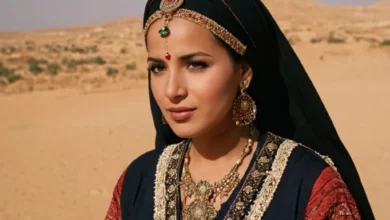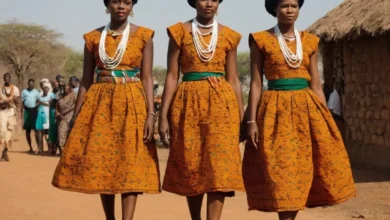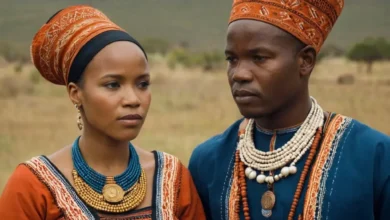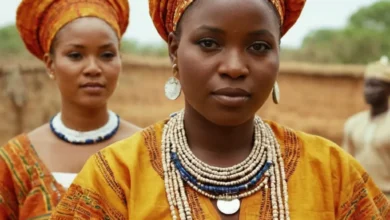Chadian Traditional Clothing
Chad, a landlocked country in Central Africa, boasts a rich tapestry of cultures and traditions, reflected vividly in its diverse attire.
From the scorching desert regions to the lush savannas, the people of Chad have crafted clothing that not only reflects their unique identities but also serves as a testament to their ingenuity in adapting to the varying climatic conditions.
In this article, we embark on a journey to explore the fascinating world of Chadian traditional clothing, delving into its cultural significance, diverse styles, and the influence of climate on its design.
A Mosaic of Cultures: The Diverse Fabrics of Chadian Identity
Chad is a land of diverse ethnic groups, each with its own distinct cultural heritage. This rich tapestry of cultures is reflected in the vibrant array of traditional clothing styles found throughout the country. The Sara, for instance, known for their agricultural prowess, wear clothing that often incorporates intricate embroidery and vibrant colors.
See also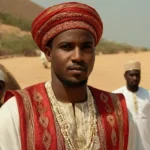 Comorian Traditional Clothing: A Blend of African, Arab, and Islamic Influences
Comorian Traditional Clothing: A Blend of African, Arab, and Islamic Influences
The Kanuri, who inhabit the arid regions in the north, favor simpler garments that offer protection from the harsh desert sun. The Arab tribes, residing in the north-east, adorn themselves in flowing robes and head coverings, a testament to their nomadic heritage.
One of the most striking features of Chadian traditional clothing is its use of vibrant colors. Deep hues of indigo, crimson, and ochre are frequently employed, symbolizing vitality and resilience. These colors often hold specific cultural meanings, with certain shades associated with particular ethnic groups or ceremonies.
The use of natural dyes, extracted from plants and minerals, adds a touch of earthy elegance to the garments. These dyes are not only aesthetically pleasing but also durable, capable of enduring the rigors of daily life in Chad’s diverse climate.
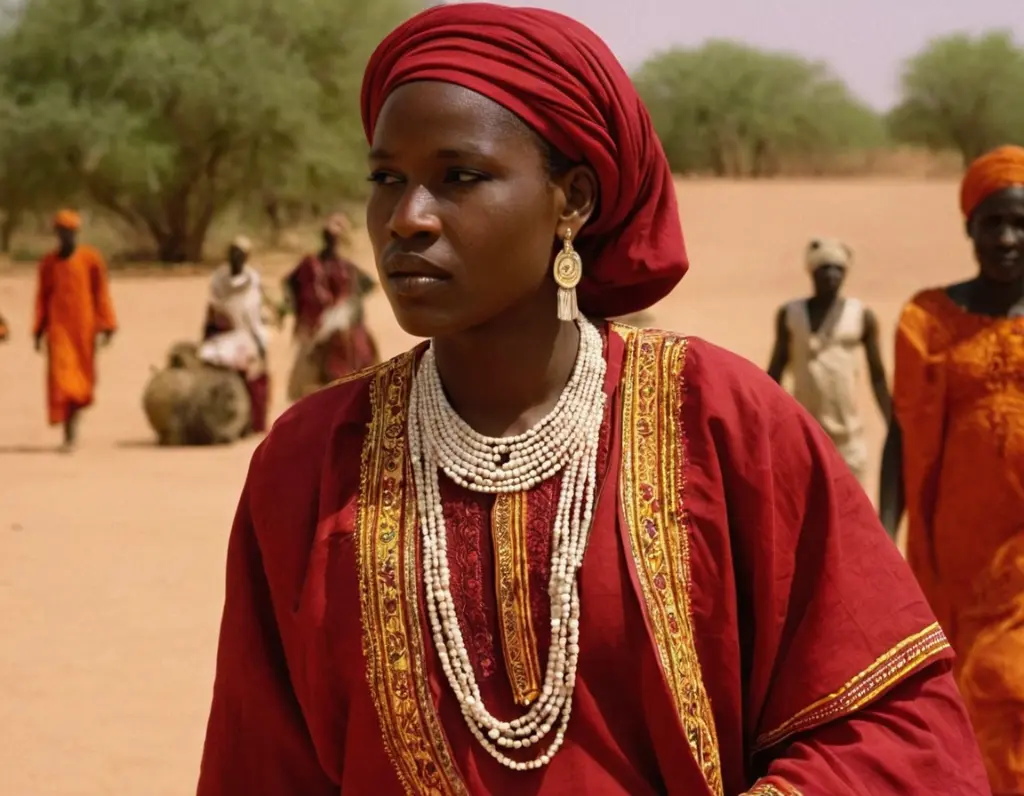
Embracing Tradition: The Role of Handwoven Fabrics
The art of weaving is deeply ingrained in Chadian culture. Many communities, especially in rural areas, maintain traditional weaving practices passed down through generations. The intricate patterns woven into these fabrics tell stories of their creators, conveying historical narratives, social structures, and cultural beliefs. These handwoven fabrics are not merely textiles but expressions of identity, showcasing the artistry and resilience of the Chadian people.
See also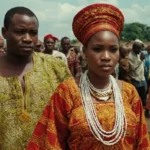 Congolese Traditional Clothing: From Liputa to Other Cultural Attire
Congolese Traditional Clothing: From Liputa to Other Cultural Attire
The most common fabrics used in Chadian traditional clothing include:
- Bazin Riche: This widely popular fabric, with its distinctive checkered pattern, is often used for ceremonial clothing and festive occasions. Its rich texture and vibrant colors make it a favorite among many ethnic groups.
- Brocade: Another notable fabric, brocade is characterized by its intricate woven patterns and often features motifs inspired by nature, geometric shapes, or cultural symbols. It is commonly used for clothing, accessories, and decorative items.
- Cotton: Widely available and versatile, cotton is a staple fabric used for a variety of garments, particularly in the warmer regions of the country. It is known for its breathability and comfort, making it ideal for daily wear.
- Leather: In the arid regions, leather plays a crucial role in traditional clothing. It is used to make durable garments and accessories, providing protection from the harsh desert elements.
A Fusion of Style and Functionality: Adapting to Climate
The diverse geographic landscape of Chad presents a unique challenge for traditional clothing. From the scorching desert heat of the north to the humid savannas of the south, the country experiences a wide range of climatic conditions. Chadian traditional clothing has evolved over centuries to effectively adapt to these diverse environments.
In the arid regions, where temperatures soar during the day and plummet at night, garments are designed to provide maximum protection from the sun and wind. The traditional Kabu, a long, flowing robe often worn by men in the north, offers ample coverage and shields the body from the sun’s rays. In the south, where humidity reigns supreme, light and airy fabrics like cotton are favored, allowing for better ventilation and comfort.
The use of head coverings is also dictated by climate. In the north, the Cheche, a traditional head scarf, is worn by both men and women to protect their heads from the sun and sand. In the south, straw hats and woven headbands are common, providing shade and absorbing moisture.
Beyond Clothing: The Significance of Accessories
Accessories play a vital role in Chadian traditional attire, adding both aesthetic appeal and cultural significance.
- Jewelry: From elaborate necklaces and bracelets to earrings adorned with intricate designs, jewelry plays a prominent role in Chadian culture. Often made from beads, precious metals, or natural materials, these ornaments reflect social status, wealth, and religious beliefs.
- Headscarves: Headscarves, like the Cheche, are not only practical but also symbolic. They often come in vibrant colors and intricate patterns, signifying the wearer’s ethnic background, marital status, or religious affiliation.
- Footwear: In the arid regions, leather sandals are a common sight, providing protection for the feet and offering a touch of elegance. In other areas, simple sandals made from woven materials are worn for daily activities.
- Bags and Purses: Leather bags and purses, often decorated with beadwork or embroidery, are used for carrying essential items and showcasing cultural traditions.
The Enduring Legacy of Chadian Traditional Clothing
Chadian traditional clothing is not merely a fashion statement; it serves as a powerful symbol of cultural identity, history, and resilience. Through its intricate designs, vibrant colors, and diverse styles, it tells the stories of the Chadian people, their struggles, and their triumphs.
In recent years, there has been a growing movement to preserve and promote Chadian traditional clothing. Local designers are incorporating traditional elements into modern designs, creating innovative fashion pieces that pay homage to the country’s rich cultural heritage.
While the influence of globalization is evident in the changing fashion trends of Chad, the enduring beauty and cultural significance of traditional attire remain a testament to the enduring spirit of the Chadian people.
Frequently Asked Questions (FAQs)
What is the most common type of fabric used in Chadian traditional clothing?
While various fabrics are utilized, Bazin Riche, a distinctively checkered fabric, is widely popular for ceremonial clothing and festive occasions. Its rich texture and vibrant colors make it a favorite among many ethnic groups.
How does Chadian traditional clothing adapt to the country’s diverse climates?
Chadian clothing is meticulously designed to withstand the extreme temperature variations across the country. For instance, in the arid regions, garments like the Kabu, a long flowing robe, offer protection from the harsh sun and wind. In the south, where humidity is prevalent, light and airy fabrics like cotton are favored for better ventilation and comfort.
What is the significance of accessories in Chadian traditional clothing?
Accessories are an integral part of Chadian attire, adding both aesthetic appeal and cultural significance. Jewelry, head coverings, footwear, and bags all serve to reflect social status, wealth, ethnic background, and religious beliefs. They are an important means of expressing identity and celebrating cultural heritage.
The diverse and vibrant world of Chadian traditional clothing is a testament to the country’s rich cultural heritage and the ingenuity of its people in adapting to diverse climates. Through its intricate designs, vibrant colors, and symbolic significance, Chadian attire tells the stories of its people, their resilience, and their enduring connection to their roots.
As we journey into the future, it is essential to preserve and celebrate this unique expression of Chadian identity, ensuring that the legacy of its traditional clothing continues to inspire generations to come.
